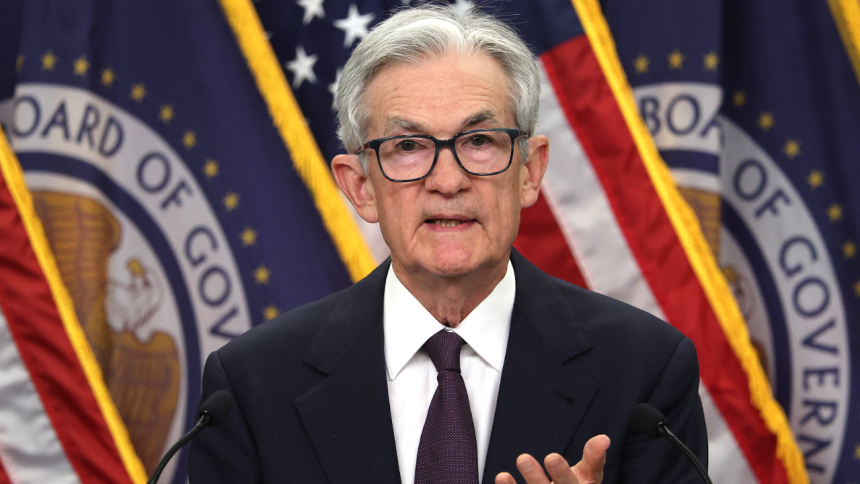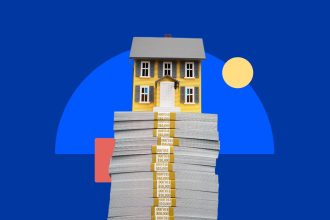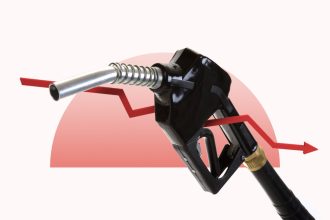The Federal Reserve left interest rates unchanged for a fifth straight meeting, with policymakers stuck in a prolonged wait-and-see mode as President Donald Trump’s tariffs leave them wary of cutting borrowing costs too soon.
The decision means the key interest rates that Americans pay to finance anything from a car to a home renovation will stay steady. Meanwhile, savers who’ve parked their cash in a high-yield savings account will continue benefiting from inflation-beating returns — and yields holding at levels previously not seen for over a decade.
Behind the decision, however, is a growing divide over how the Fed should steer the economy. For the first time since 1993, two Fed governors dissented against the rest of the Federal Open Market Committee (FOMC), preferring to cut borrowing costs by a quarter of a percentage point.
Those disagreements come as Trump unleashes an unprecedented amount of public pressure on Fed Chair Jerome Powell to cut rates. Trump has said the chief central banker is “too late” to adjust policy, is preventing the economy from booming and is adding to the U.S. government’s own cost of borrowing money. He reportedly discussed firing Powell before his term ends in May 2026 with Republican lawmakers.
“This will only add to the scrutiny and second-guessing of anything the Jerome Powell-led Federal Reserve says, does or doesn’t do,” said Greg McBride, CFA, Bankrate chief financial analyst.
Consumer borrowing costs are a little bit lower than they were at this time a year ago, after the U.S. central bank lowered interest rates a full percentage point across a series of cuts in late 2024. Yet, the U.S. central bank’s key rate has been frozen since January, with officials paralyzed by rising economic uncertainty.
A top concern is Trump’s ongoing global trade war, which brought tariff rates on key trading partners to the highest level since the Great Depression. Economists warn that those tariffs could result in higher prices across store shelves, but they may also weaken economic growth and make production more expensive.
So far, inflation has shown up first. After coming within an earshot of the Fed’s 2 percent target earlier this year, price pressures are now picking up again. Inflation rose 2.7 percent from a year ago, according to the latest data from the Bureau of Labor Statistics, and many prices on items that are typically imported popped.
Even so, price increases haven’t been as drastic as economists initially feared — but that depends on where tariff rates end up. Helping keep a lid on inflation, Trump reduced or postponed many of the harshest tariff hikes that he announced on “Liberation Day” in early April, but a key Aug. 1 deadline is approaching.
Trump has said that any country that doesn’t strike a deal with the U.S. could face tariff rates between 15-20 percent, and he’s threatened a steeper 50 percent levy on goods from Brazil. The higher the tariff rate, the harder it becomes for businesses to absorb some of those higher costs. The products that businesses stocked up on before tariffs went into effect also won’t last forever.
Powell has highlighted that someone along the supply chain — whether it’s the importer, the exporter, the retailer or the consumer — will end up footing the bill. Right now, they just don’t know who.
“They may be less than people estimate or more than people estimate. They’re not going to be zero,” Powell told reporters at the Fed’s post-meeting press conference. “Consumers will pay some of this. Businesses will pay some of this. Retailers will pay some of this. We’re just going to have to see it through.”
If businesses end up eating those costs, one risk is that they might start to cut back on hiring — or reduce headcount altogether. Already feeling the pain of elevated post-pandemic inflation, consumers could also start to pull back on spending.
Policymakers have implied that those effects could actually offset higher inflation, weakening the economy. It’s part of the reason policymakers still continued penciling in a median of two cuts for 2025, despite simultaneously expecting higher inflation. Some Fed officials have also indicated that they don’t want to wait too long to watch what happens with inflation because high rates alone raise the risk of a recession.
Powell said the Fed hasn’t made any decisions on when it could next cut rates and that they’ll want to keep an eye on incoming data. Previously, investors had predominantly expected the next rate cut to occur in September, according to CME Group’s FedWatch tool.
“Interest rates are high and are unlikely to come down quickly,” McBride says. “Consumers should lean into this by aggressively paying down high-cost debt and padding emergency savings. Those with less debt and more savings will be best positioned to weather whatever the economy throws at us in the months ahead.”
Wondering what to make of the Fed’s latest announcement? Here’s a breakdown of what it means for every aspect of your personal finances.
The Fed’s interest rate decision: What it means for you
Savers
Savers are among the biggest winners in today’s high-rate environment. Yields on savings accounts and certificates of deposit (CDs) are unlikely to budge much as the Fed keeps rates steady.
That can help Americans grow their savings at a time when they may need it most. Recession risks are elevated, yet less than half (or 46 percent) of Americans have enough savings to cover three months’ worth of expenses, according to Bankrate’s latest Emergency Savings Report. Experts typically recommend keeping enough cash on hand to cover at least six months’ worth of expenses.
Unless you’ve locked in your cash in a CD, though, banks could adjust their offerings at any time. Yields may restart their descent if the Fed begins strongly signaling that they’re about to start cutting rates again.
Even if yields start to drift lower, most important for savers will be whether yields remain higher than the current rate of inflation. Savers are most likely to earn a “positive” return in a high-yield savings account, where yields currently stand at 4 percent or more. That’s almost eight times higher than the national average savings rate of 0.48 percent, which is weighed down by traditional brick-and-mortar banks that pay near-zero percent in interest.
Borrowers
If there’s any clear loser from today’s high-rate era, though, it’s borrowers. Americans with credit card debt are still facing higher interest rates than at any point before the pandemic — even after the Fed has started cutting rates. Meanwhile, Americans who’ve had to make a big-ticket purchase have been forced to borrow during one of the most expensive periods in over a decade.
Here’s a snapshot of the current borrowing landscape and how high key consumer borrowing rates remain as the Fed continues to keep rate cuts on hold:
- Credit card rates: 20.13 percent;
- Home equity lines of credit (HELOCs): 8.26 percent;
- Home equity loans: 8.25 percent;
- Five-year new car loan: 7.26 percent;
- Four-year used car loan: 7.73 percent; and
- Personal loans: 12.64 percent.
If you have a balance on your credit card, consider utilizing a balance-transfer card. The best offers on the market come with an introductory 0 percent annual percentage rate (APR) for up to 21 months, helping you make headway on your repayments. If your balance is too large, though, you might be better off working with a nonprofit credit counselor.
If you think you may have to borrow money during today’s high-rate era, keep a close watch over your credit score. Borrowers with a record of on-time payments, a healthy utilization rate (typically seen as being no more than 30 percent) and a low debt-to-income ratio are often guaranteed the most competitive rates.
Homeowners and homebuyers
The Fed has greater control over shorter-term interest rates — not rates on long-term debt like a 30-year fixed-rate mortgage. That helps explain why mortgage rates have actually increased since the Fed began cutting borrowing costs in September, which have been stuck above 6.5 percent since October 2024.
The 30-year fixed-rate mortgage more closely tracks the 10-year Treasury yield, which has risen as investors process fears of hotter inflation from tariffs and ballooning government debt.
Even once the Fed cuts interest rates, it might not offer much help. The current consensus among housing economists is that 30-year mortgage rates could remain above 6.5 percent for the rest of this year, according to Bankrate research.
Lower rates could help heal some of the affordability challenges plaguing borrowers. The median home sale price for June 2025 surged to $435,300, the highest median price on record, according to the latest data from the National Association of Realtors. It could also, however, bring a wave of borrowers onto the market, further pushing up prices. Those prices continued to climb last month, even as sales of existing homes dropped 2.7 percent from the previous month, as shortages continue to strain housing supply.
Investors
That might not last forever. Investors will be looking at the same economic signals as Fed officials. Sentiment may change if growth begins to slow — or if a resilient economy keeps lower interest rates on hold.
None of that should matter to long-term investors. If you don’t need any cash for another five to 10 years, you’re probably better off staying the course and weathering any short-term volatility. The stock market’s post-Liberation Day tear illustrates why: Investors who pulled out and sold any assets as the S&P 500 plunged a whopping 12 percent missed out on a subsequent 28 percent rebound.
Investors seem to be unfazed by rising economic uncertainty, higher tariffs and a Fed on hold. The S&P 500 and Nasdaq have both been flirting with record highs, and after surging to the highest level since the pandemic, volatility has been low, according to the Chicago Board of Options Exchange’s Vix Index.
Why we ask for feedback
Your feedback helps us improve our content and services. It takes less than a minute to
complete.
Your responses are anonymous and will only be used for improving our website.
Help us improve our content
Read the full article here














